
This is a list of notable events in music that took place in the year 1942.

This is a list of notable events in music that took place in the year 1944.
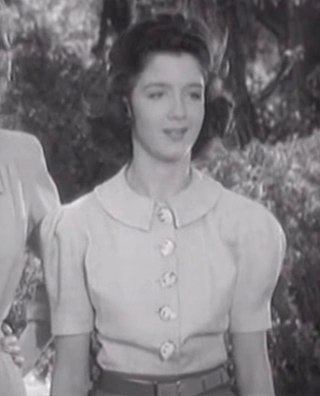
Margaret O'Rene Ryan was an American dancer and actress, best known for starring in a series of movie musicals at Universal Pictures with Donald O'Connor and Gloria Jean.

The Hollywood Palace is an hourlong American television variety show broadcast Saturday nights on ABC from January 4, 1964, to February 7, 1970. Titled The Saturday Night Hollywood Palace for its first few weeks, it began as a midseason replacement for The Jerry Lewis Show, another variety show, which lasted only three months.

Reveille with Beverly is a 1943 American musical film starring Ann Miller, Franklin Pangborn, and Larry Parks directed by Charles Barton, released by Columbia Pictures, based on the Reveille with Beverly radio show hosted by Jean Ruth. It is also the name of the subsequent soundtrack album.

Gloria Jean was an American actress and singer who starred or co-starred in 26 feature films from 1939 to 1959, and made numerous radio, television, stage, and nightclub appearances. She may be best remembered for her appearance with W. C. Fields in the film Never Give a Sucker an Even Break (1941).

Follow the Boys also known as Three Cheers for the Boys is a 1944 musical film made by Universal Pictures during World War II as an all-star cast morale booster to entertain the troops abroad and the civilians at home. The film was directed by A. Edward "Eddie" Sutherland and produced by Charles K. Feldman. The movie stars George Raft and Vera Zorina and features Grace McDonald, Charles Grapewin, Regis Toomey and George Macready. At one point in the film, Orson Welles saws Marlene Dietrich in half during a magic show. W.C. Fields, in his first movie since 1941, performs a classic pool-playing presentation he first developed in vaudeville four decades earlier in 1903.
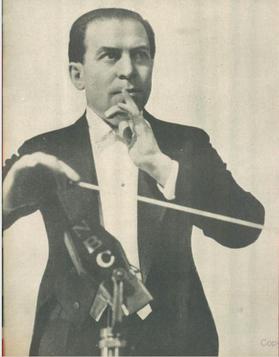
Phil Spitalny was a Russian Empire-born American musician, music critic, composer, and bandleader heard often on radio during the 1930s and 1940s. He rose to fame after he led an all-female orchestra, a novelty at the time.
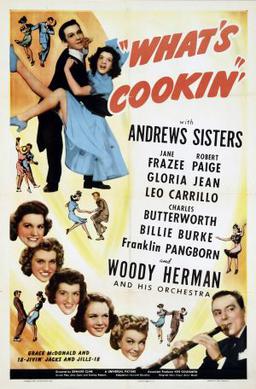
What's Cookin'? is a 1942 American musical film directed by Edward F. Cline and starring The Andrews Sisters, Jane Frazee, Robert Paige and Gloria Jean. The film is based on the story Wake Up and Dream written by Edgar Allan Woolf.

Two Girls and a Sailor is a 1944 American musical film directed by Richard Thorpe and starring Van Johnson, June Allyson and Gloria DeHaven. Set on the American homefront during World War II, it's about two singing sisters who create a lavish canteen to entertain members of the military, thanks to financial contributions from a mysterious donor. The picture features a host of celebrity performances, including Jimmy Durante doing his hallmark "Inka Dinka Doo", Gracie Allen, and Lena Horne. Richard Connell and Gladys Lehman were nominated for the Academy Award for Best Original Screenplay.
Get Hep to Love is a 1942 musical film starring Gloria Jean, Donald O'Connor, Jane Frazee, Robert Paige and Peggy Ryan. The film was directed by Charles Lamont.

San Antonio Rose is a 1941 American black-and-white musical film starring Jane Frazee and featuring Lon Chaney Jr. and Shemp Howard; it was also designed as a showcase for the then-popular vocal group The Merry Macs. The plot involves two rival groups of entertainers converging on an abandoned roadhouse with the intent to reopen it, unaware that a gangster is eyeing the property for his own scheme.
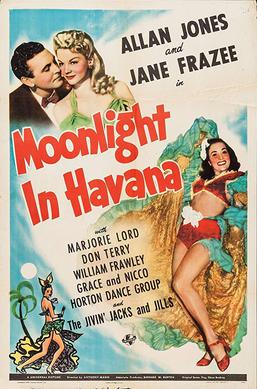
Moonlight in Havana is a 1942 American film romantic comedy directed by Anthony Mann and featuring Allan Jones, Jane Frazee, and Marjorie Lord. This was Mann's second film as director. Choreography by Lester Horton.
Mister Big is a 1943 musical directed by Charles Lamont, starring Donald O'Connor, Gloria Jean and Peggy Ryan. The film features the song "Rude, Crude, and Unattractive".
It Comes Up Love is a 1943 American, black and white, musical comedy starring Gloria Jean, Ian Hunter, and Donald O'Connor. It is the only film starring Jean and O'Connor that doesn't also star Peggy Ryan, another one of the talented teenagers at Universal Studios.
This Is the Life is a 1944 American musical romantic comedy film directed by Felix E. Feist starring Donald O'Connor, Susanna Foster, and Peggy Ryan. It is one of the several films that Universal Studios rushed O'Connor and Ryan through before O'Connor was drafted into the Army to serve in World War II.

Bowery to Broadway is a 1944 American film starring Maria Montez, Jack Oakie, and Susanna Foster. Donald O'Connor and Peggy Ryan also had a small specialty act, and it was the only film they were in together where they didn't have a name or character.
The Hour of Charm is an American old-time radio music program. It debuted on CBS on May 18, 1934, and had its final broadcast on CBS on May 2, 1948. The program also was broadcast on Armed Forces Radio, and after its network broadcasts ended, a new version was syndicated via transcriptions.
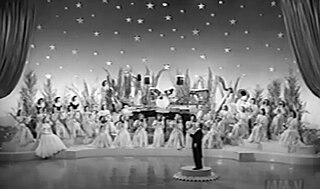
The Hour of Charm Orchestra was an American musical group led by Phil Spitalny. Popular in the 1930s and 1940s, it was an all-female orchestra in an era when most orchestra members were male. The group was also known as Phil Spitalny's All-Girl Orchestra.
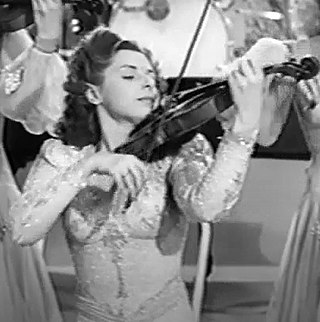
Evelyn Kaye Klein (1911–1990) was an American violinist, best known for her performances as "Evelyn and Her Magic Violin" with Phil Spitalny's Hour of Charm Orchestra.
















